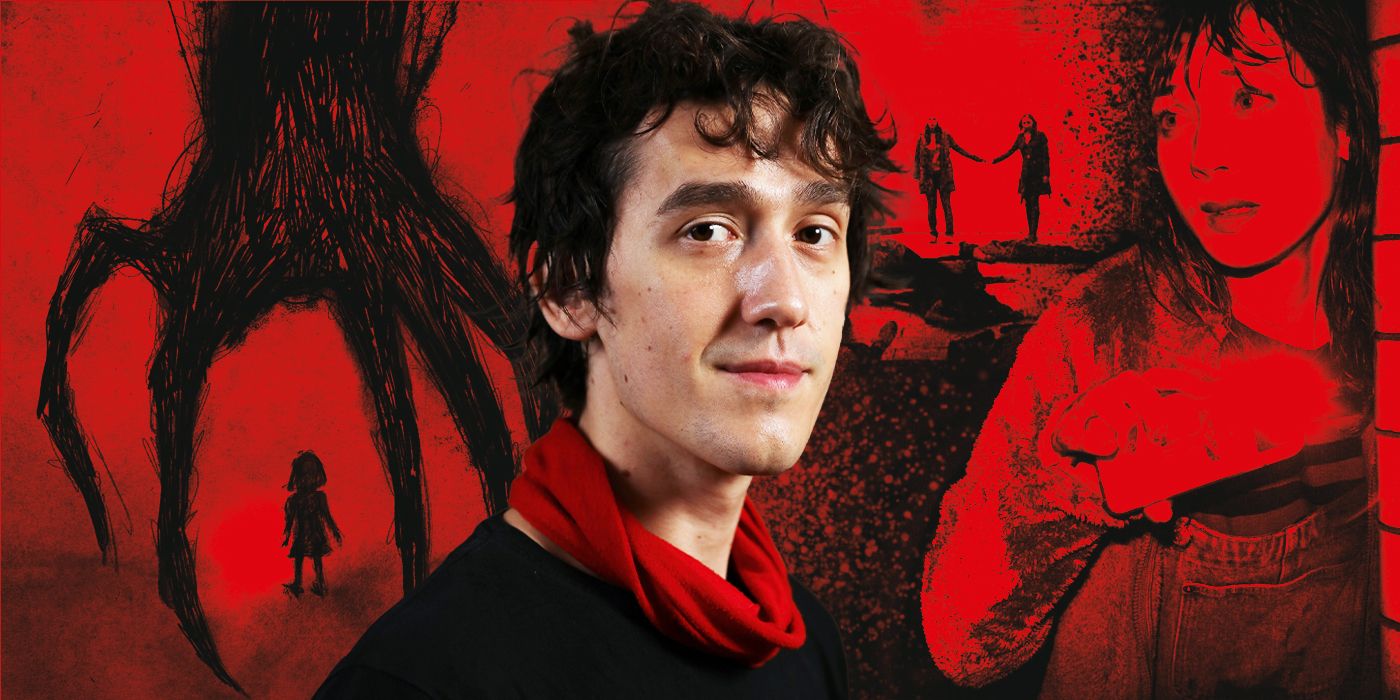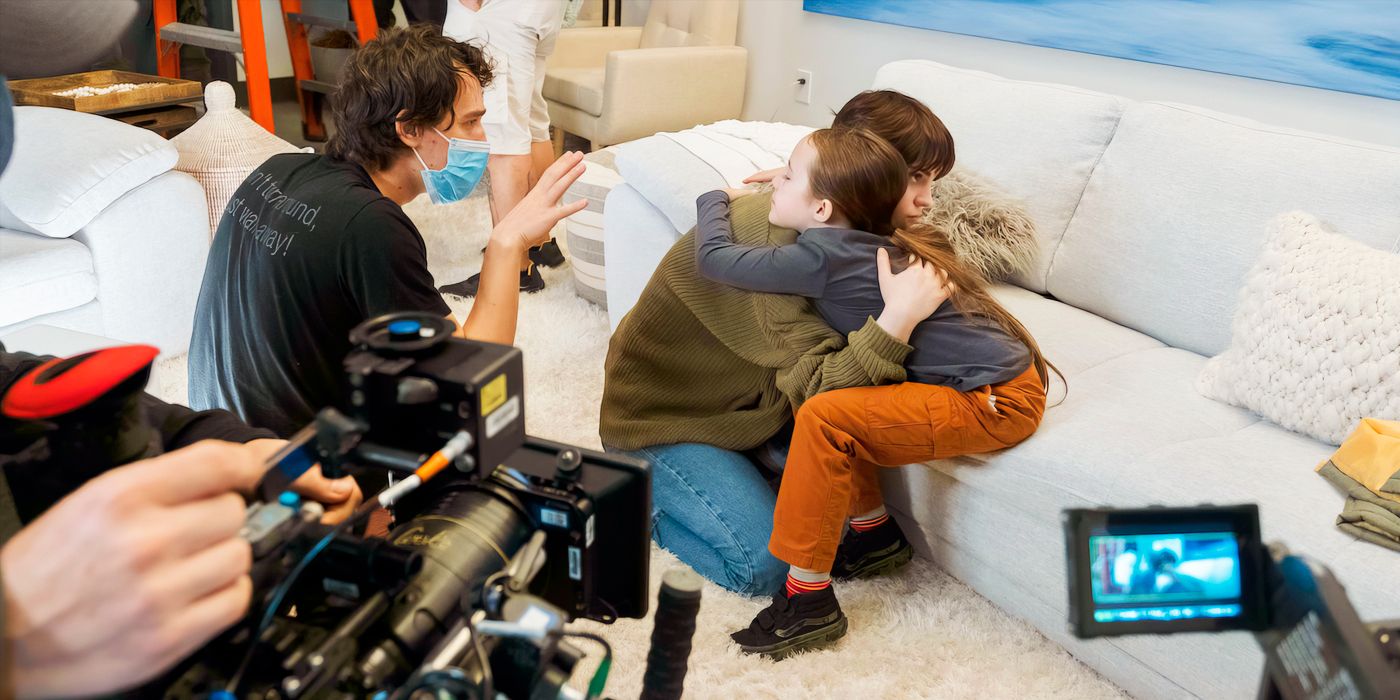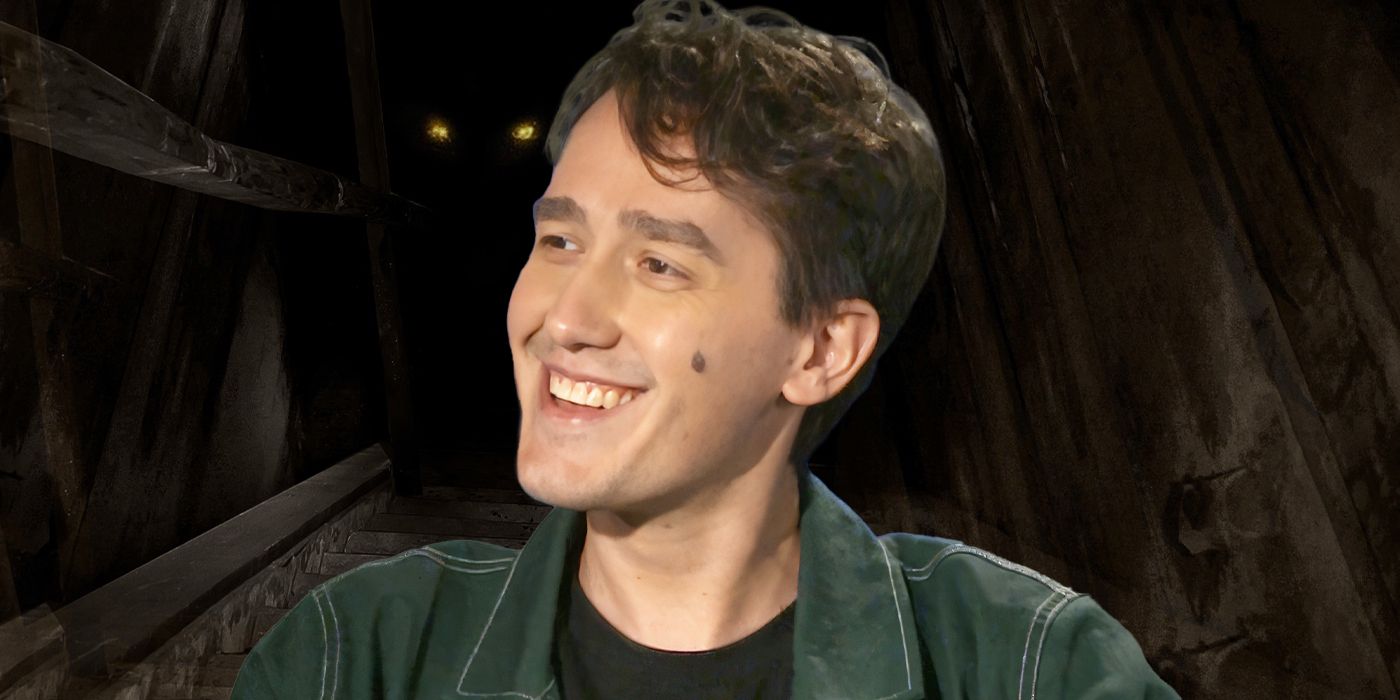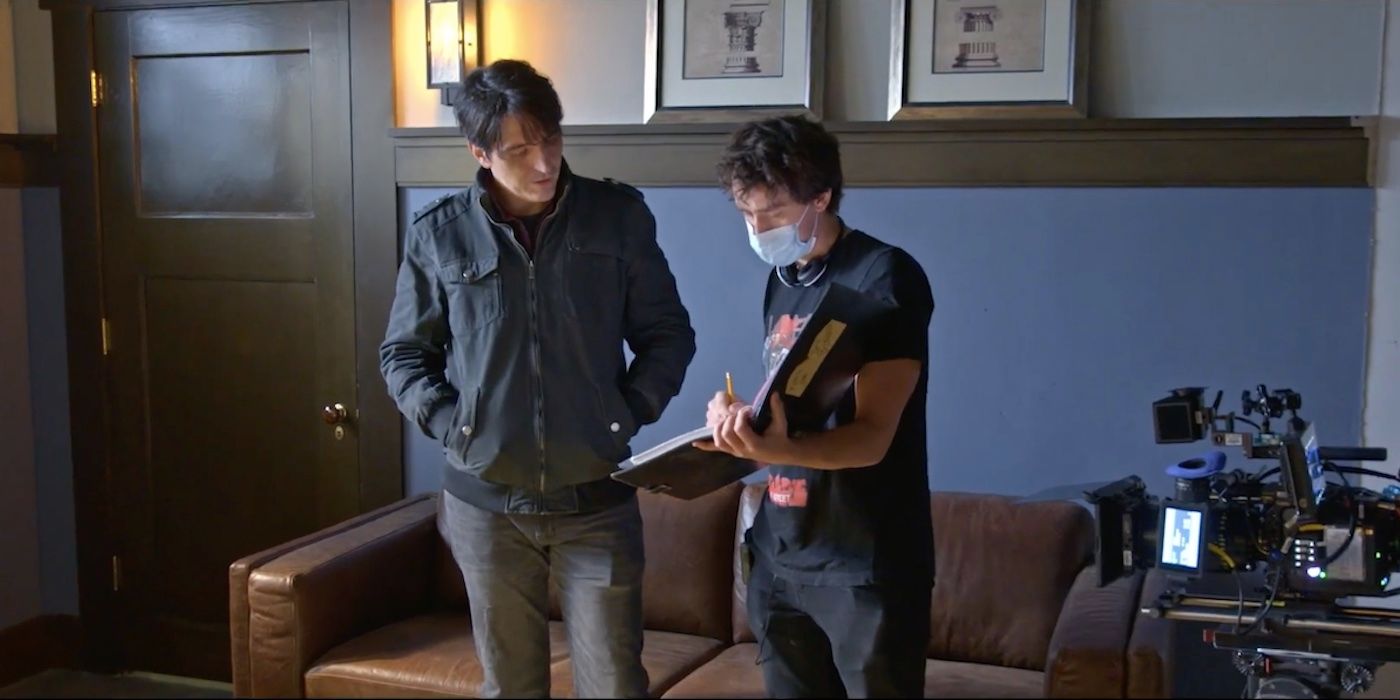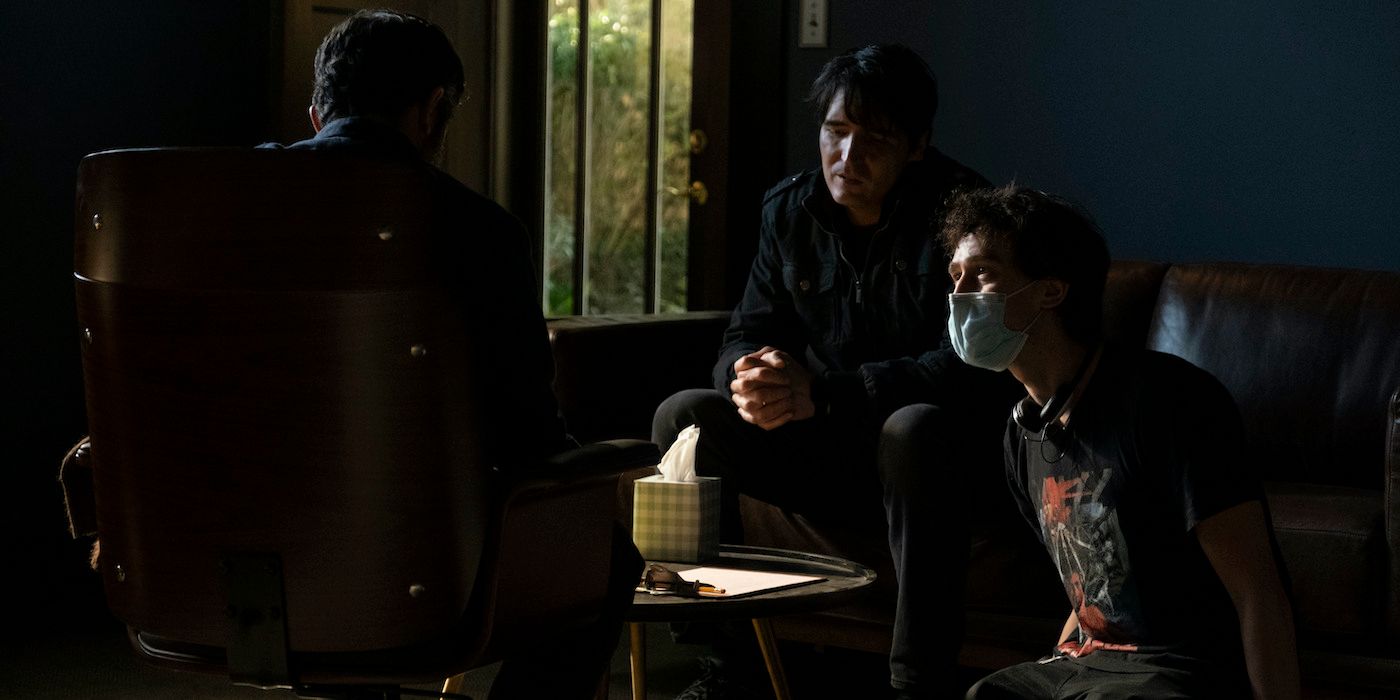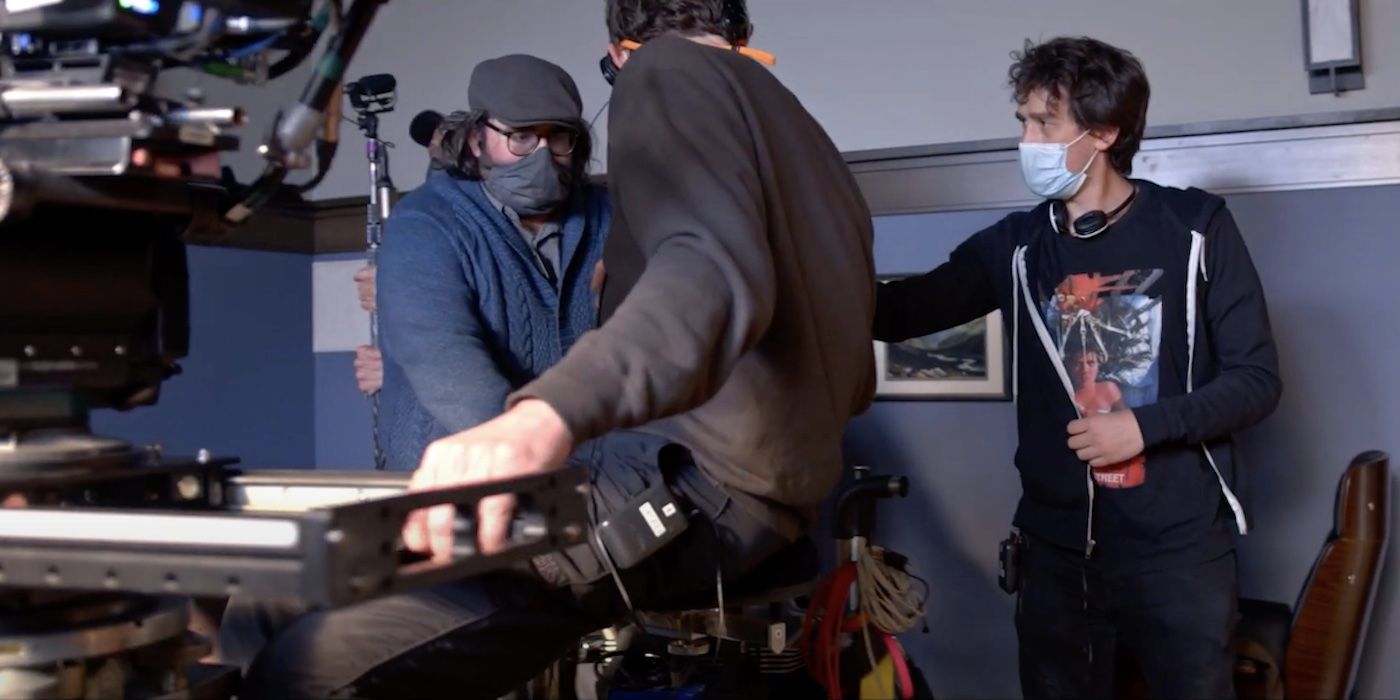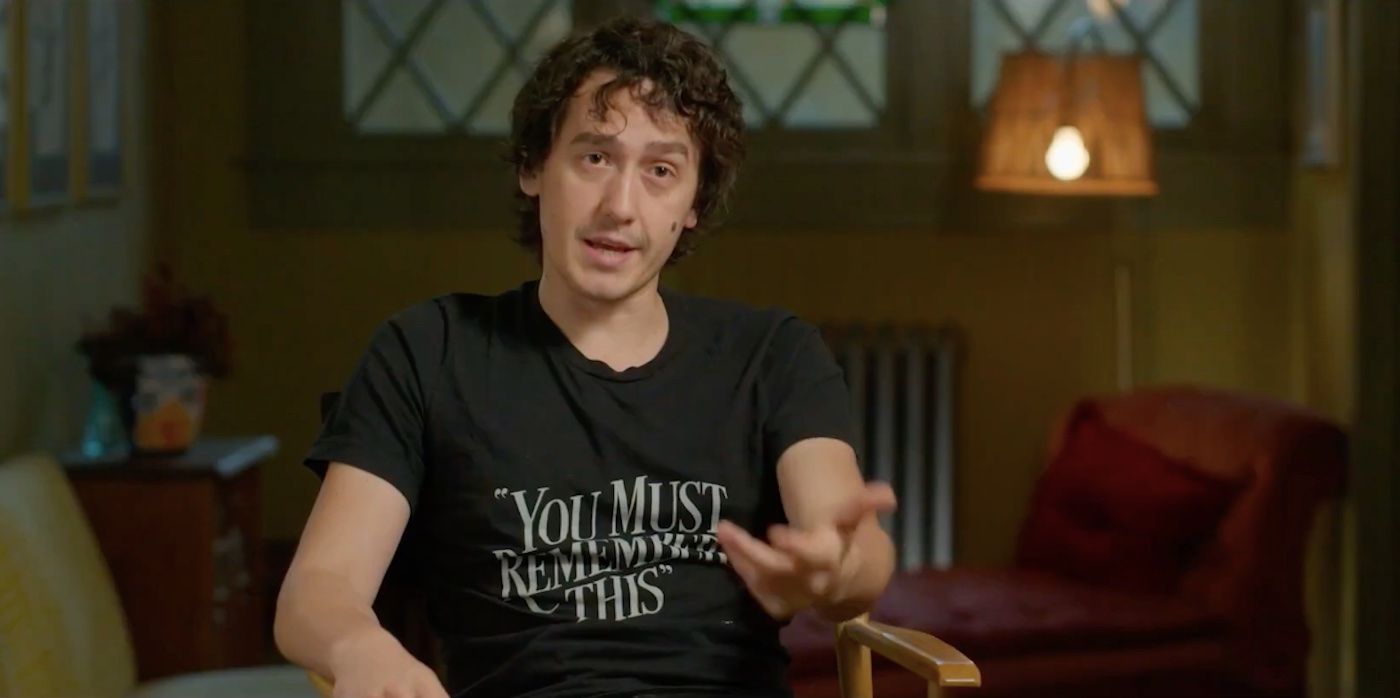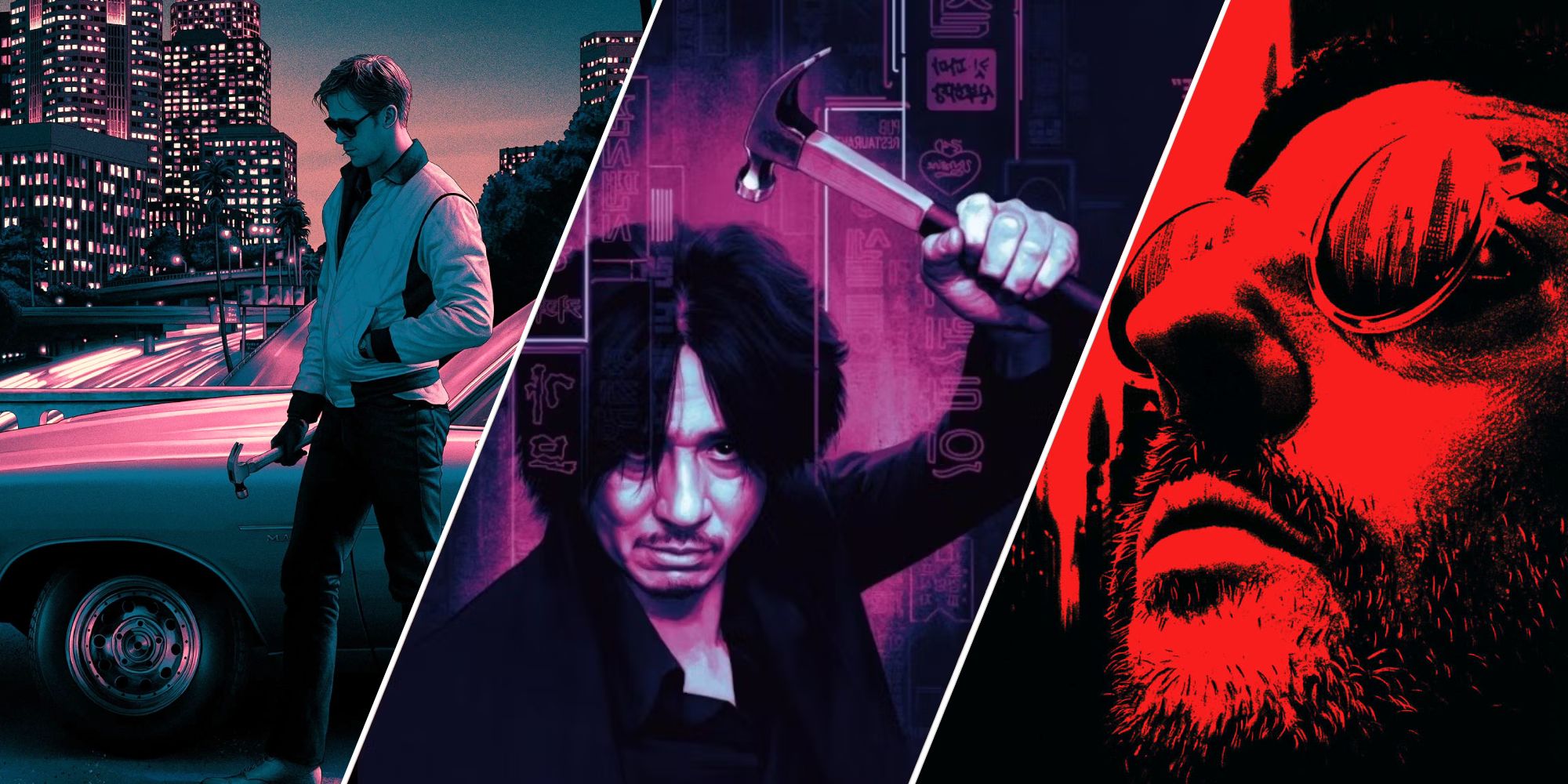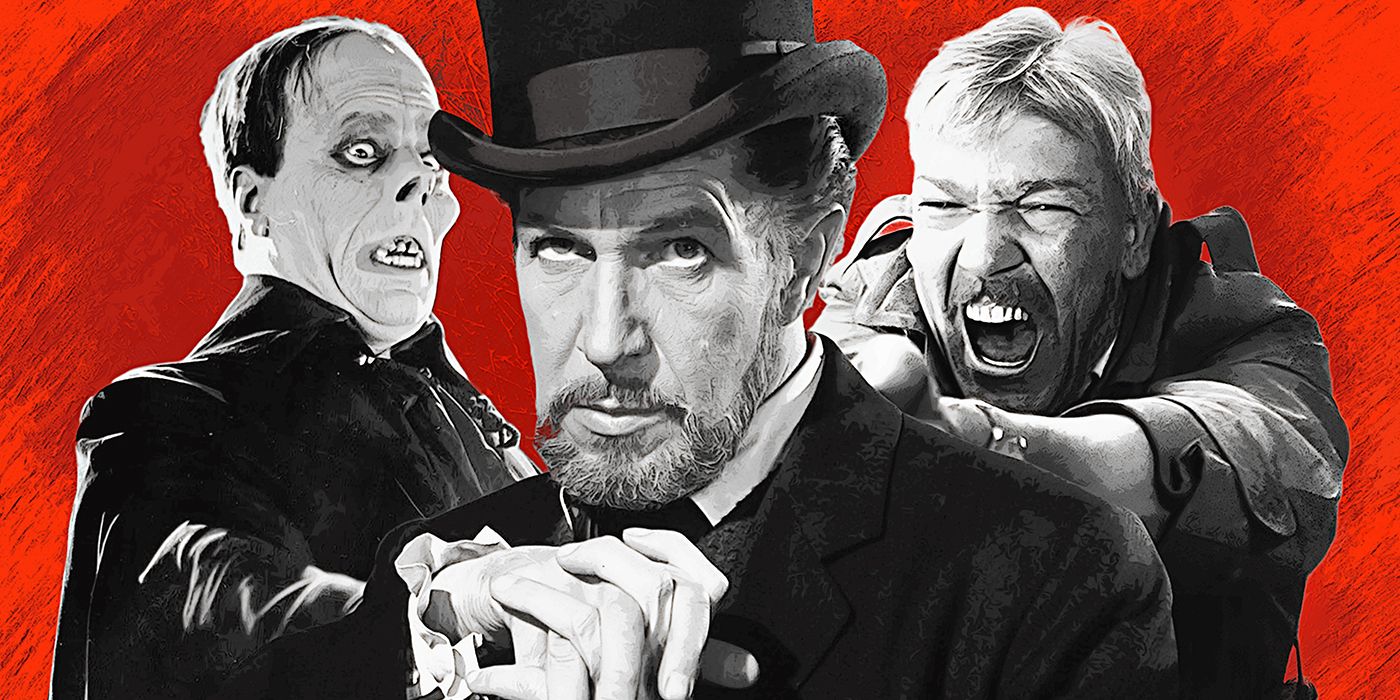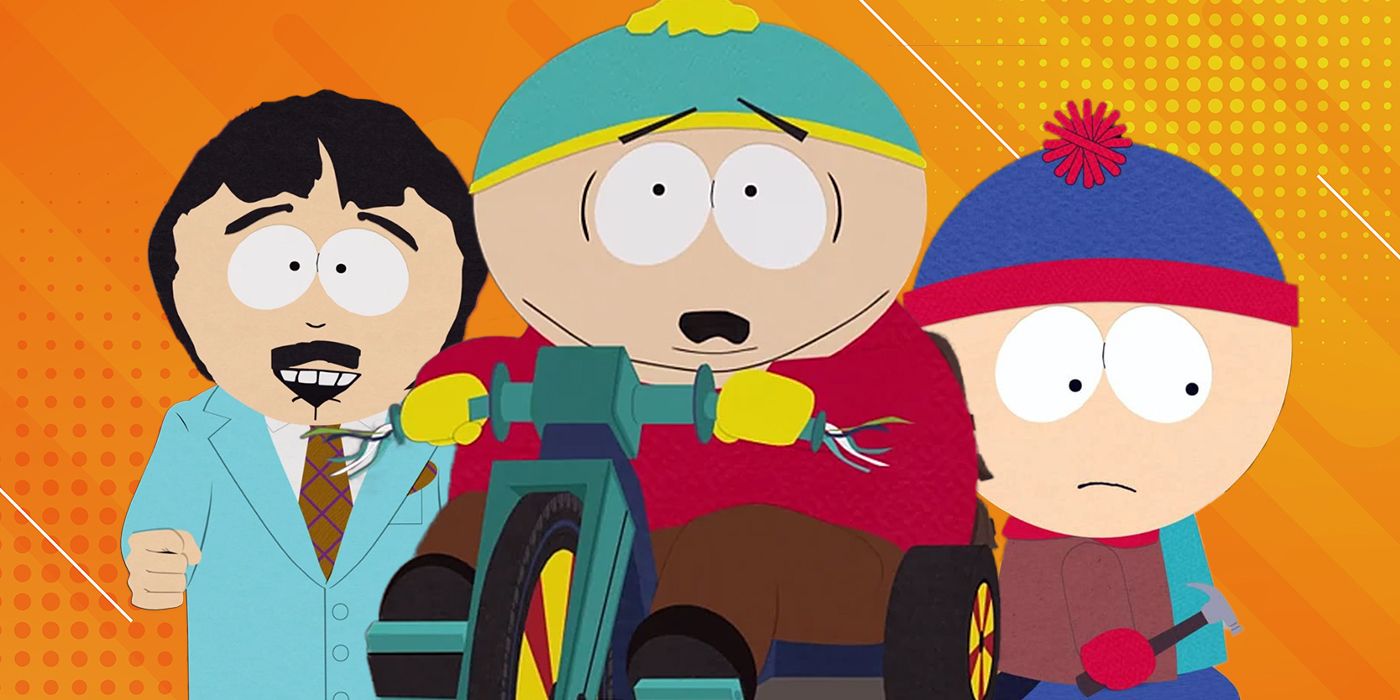If there’s one thing you can be sure of after speaking to Rob Savage for an hour, it’s that the guy loves to talk about movies. Before I even hit record on our Zoom call, the horror director is recounting fond memories of getting pissed with the Irish film industry at the Fastnet festival. He asks me if I know Kate Dolan (I don’t, but Ireland really can be that small), and we both gush about her 2021 horror film, You Are Not My Mother. He’s wearing a Girls on Top Lynne Ramsay T-shirt as he raves about Parker Posey in Scream 3. (The man has taste.)
Talking, I quickly get the impression that the director of Host, Dashcam, and this year’s The Boogeyman is the ultimate film bro (though one who doesn’t feel the need to mansplain A Clockwork Orange’s themes, thankfully). He’s also the ultimate success story: the film fanatic who actually made it without a fancy filmmaking degree or a producer father.
But how exactly did Rob Savage go from being a kid without connections or a degree on a farm in the middle of the English countryside to bringing a Stephen King story to life and becoming one of horror’s most exciting figures before he turned 30?
How Did Rob Savage Get Into Filmmaking?
Growing up in Shropshire, Savage’s parents tried to raise him without a TV. Horror movies became forbidden fruit, and he tried to get his hands on as many “fucked up” films as he could and wound up watching Don’t Look Now and The Wicker Man for the first time in the same week when he was 13. (He really didn’t make puberty any easier for himself). “I was just starting to get into horror, and I kind of knew the template of how a movie goes,” he says of his first screening of The Wicker Man. “I still remember that feeling of just being completely gutted and just sitting there in the dark as the credits rolled, and it kind of rewrote the way that I saw storytelling and horror and films.”
Years before Savage would become known for being a horror darling, he tried his hand at arthouse romance in his own unsettling approach. The only way I can describe his debut feature, Strings, is that it resembles what would happen if Andrea Arnold decided to make a student film. Well, that might be a stretch, as the script is more than shaky at times. (I’ll forgive him though, as most 17-year-old boys consider Michael Bay high art.) I mention Arnold’s Fish Tank to him, which he adores. He also says that Céline Sciamma’s Water Lilies was a major inspiration for the movie. Strings is an incredibly tender look at teenage rural life on the brink of something bigger and the simultaneous terror and excitement that brings. The main character and our lens, Grace (Philine Lembeck), yearns for connection, and to be desired. The opening scene sees her masturbating with a used toothbrush. How did one of today’s best horror directors make this, and how did he do it when he was just 17?
“Ignorance and naivety played a large part in it,” says Savage, who admits he hasn’t watched Strings in over a decade and seems somewhat taken aback by the fact that I enjoyed it. Savage may be known for his out-and-out horror fare, but he grew up wanting to be an indie director: “Lynne Ramsey is my favorite filmmaker, I was an arthouse kid,” So the T-shirt isn’t just a conversation starter. “I wanted to make Morvern Callar rather than The Mangler.” He started shooting Strings with a group of friends on his 17th birthday with a £3,000 budget. “We had no script, we had no idea, we had no money, we didn’t have a camera, but we kind of went around boasting about the fact that we were gonna make this movie, and it was gonna be a masterpiece, and just really talking big,” he remembers. Savage tells me that making Strings was a whole education in itself. “It was like film school,” he says. “Every day was a discovery and a humiliation.”
Rob Savage Got Kicked Out of Film School
As for film school, Savage got kicked out after his first year. He’d just finished shooting Strings and couldn’t afford a laptop to edit it, so he heaved around 70 hours worth of footage on tapes every day. On his first day at school (he doesn’t say which one), a tutor reprimanded him for skipping shorts and going straight to features. “He told me that I’d made a mistake shooting a feature,” he says. “I should have just put my focus into a short, and that nobody would want to see my feature.” Thankfully, that didn’t dissuade him, so he went about completing Strings. “Reluctantly, they gave me the key to edit the movie at night time, so I was able to go into the edit suite. I had the whole building to myself, just me and the janitor, and I would edit the movie at night and then wouldn’t go to the classes, or I would turn up, and I’d fall asleep.”
Finally, the school gave him an ultimatum: give up on Strings or get on your bike. He went with the latter. He spent the next year finishing Strings and sleeping on friends’ couches around London. “It could have led to me being out on the street but ultimately was the right thing to do and kind of set up my career,” he says. I wonder how that tutor felt when he heard Strings went on to win the Raindance Award at the British Independent Film Awards in 2012.
After Strings, Savage spent years making shorts in the UK and directing TV episodes, from Prime Video’s Soulmates to Britannia. Then, in 2020, Savage rose to prominence when he made the pandemic movie, somewhat by accident.
‘Host’ Came About From a Two-Minute Viral Clip
He was living alone in a flat in London when the pandemic hit. When he contracted COVID-19, he needed a project to distract himself and “to kind of stave off any idea that I might just be found dead in my apartment like Naomi Watts in Mulholland Drive. I was like, ‘I gotta be creative. I’ve got to do something.’” He found a sweet wrapper (something he doesn’t keep in the house) and naturally came to the conclusion that a serial killer was living in his attic. “I was there in this empty apartment, hearing slow footsteps across the ceiling, and I was just convinced that there was somebody up there.”
He decided to use his pandemic-fuelled anxiety to prank his friends. During a Zoom call, Savage told them about the strange sounds coming from his attic and, armed with a knife, went to go check it out, bringing them along on his laptop. As he panned his laptop camera around his attic, his feed cut to a jump scare of a mutant humanoid, a clip taken from one of the best found footage movies ever made, Rec. (While he isn’t a mansplaining film bro, Savage does try to explain what Rec is to me. Oh, please.) His friends looked equal parts terrified at what they just witnessed and amazed by how their friend crafted such an effective scare in under two minutes.
Afterward, Savage loaded the resulting two-minute clip video to Twitter. In a time when we were all very scared and very online, it went viral. “Host was born out of the interest that came from that two-minute clip.” The feature-length Host follows a group of friends — many of them played by the same pals who fell victim to Savage’s original prank — who have a séance over Zoom. When they piss off a demonic spirit, they’re picked off one by one. It’s only an hour long (the length of a free Zoom meeting), but Savage makes every second count. The audience member feels like that extra person on the call, helplessly watching. Host was one of the stand-out films created during the pandemic, making it onto many “Best of 2020” lists.
‘Host’ Kick-Started Rob Savage’s Horror Career and Was Branded “Scariest Horror Movie Ever”
Following Host‘s success, Savage and his friends who were involved in the film were inundated with offers, but they ultimately went with the horror streaming service Shudder because of the creative freedom they were willing to give. “They basically said, ‘We’ll give you the money you need, and we’ll fuck off. You can have final cut, and you can just make it, and we’ll be grateful for what we get.’” While Savage is clearly proud of Host, he also makes it clear that screenlife was the last genre he thought he would operate in. “I never thought I would do a found footage movie,” he says “I’m so obsessed with film language and film grammar and how the filmmakers I’m drawn to are super stylized. So, I could never have seen myself shooting something on an iPhone, ever.”
Not only was Host a success in terms of what it did for Savage’s career and effectively scaring people, but it also went on to become the “scariest horror movie ever made” according to a scientific study. The movie got audience members’ hearts racing faster than the likes of big-budget titles like Sinister, Insidious, and The Conjuring. “It’s nice that the movie is still being talked about beyond the pandemic because when we were making it, it felt like it was just gonna be a bit of a fad movie,” says Savage.
Then Blumhouse came calling, signing a three-picture deal with Savage. These projects would also include producer Douglas Cox and writers Jed Shepherd and Gemma Hurley. Savage and Shepherd have been collaborating since their short, Dawn of the Deaf, in 2016, which screened at Sundance. The first of these projects was Dashcam, which featured similar mechanics but a grander scale. It didn’t hit a niche quite as effectively as Host — probably because of its COVID-denying, bigoted protagonist— but still showed an evolution in Savage’s style. Then, even bigger studios and the Master of Horror wanted in on the action.
Why Robert Savage Is the Perfect Director to Adapt Stephen King
The result was Savage’s adaptation of The Boogeyman, the short story from Stephen King’s collection, Night Shift, for 20th Century Studios (and it hits Hulu today). It makes perfect sense when looking back on Savage’s filmography that he would join the long line of directors to take on Stephen King. I bring up something the original writers Bryan Wood and Scott Beck said when discussing the script for a featurette for the film’s DVD: “If you take the monster out of the film, what is the film about?” It’s a quote that gets to the heart of why Stephen King’s stories are so beloved. Within all the horror, paranormal activity, blood, guts, and gore, there’s always a very human plot at the center that can stand on its own. Fortunately for him, Savage is just as interested in the monsters responsible for the horrifying moments as he is in the more human-focused scenes that some might consider “filler” — the character-driven, melodramatic parts where it’s just people talking to each other.
“I actually love doing both, but there are two sides to me, and it kind of speaks to the different kinds of cinema that I’m interested in. I love big, unsubtle, over-the-top, bombastic horror, but I also love woozy, intimate, arthouse Lynne Ramsay stuff.” Naturally, Savage’s pitch for the film was “Poltergeist meets Ordinary People.”
To do this, he pulled from some of the best movies of all time, both in and out of the horror genre. He ensured that the actual Boogeyman had less time on screen than the Xenomorph from Alien and Bruce the shark from Jaws — two of the greatest monsters in cinema history with famously limited screentime. He also cites Lucio Fulci and Krzysztof Kieślowski as influences for The Boogeyman, and he watched Kieślowski’s Three Colours Blue with star Sophie Thatcher in preparation for the film. “I’ll pull from new movies and old movies. I’m a student of horror, and love to bring techniques and ideas from movies that people might have seen or that people might not associate with a PG-13 Stephen King movie.”
“Part of the fun of making a horror movie is kind of being in dialogue with the audience, who knows the tropes of horror,” he tells me. “Part of the fun for me is teasing the audience with things that feel familiar, or kind of walking them down a path that they feel is well-trodden, and then subverting it, kind of twisting the path off into different territory.”
‘The Boogeyman’ Shows Both Sides to Rob Savage
It absolutely worked. The Boogeyman garnered attention from the very first trailer, mostly because it’s a Stephen King adaptation. But even more, interest was piqued when, similar to this year’s Evil Dead Rise, the film received such positive reactions from test screenings that it was given a theatrical release instead of going straight to Hulu. The test screenings caused such loud and long screams from the audience that the film had to be edited to allow time for the reaction, so they didn’t miss any dialogue. And not to mention the most important test subject of all, King himself, who adored the movie and wrote Savage a personal note the following morning: “Robert, I’m still thinking about your movie.”
Not all critics were as kind. He tries not to read reviews, and they don’t have a major impact on him as long as it’s a criticism he doesn’t agree with. “There were a lot of Boogeyman reviews that wanted much more plot, and I’m just not a plot guy. I much prefer scares and tone and character.” But if a critic points out something Savage actually agrees with, that’s where it hurts. “The worst thing is when you read a review, and they spot something that is on the money. You feel very seen and very exposed in those moments”
While Savage was vocal at the time of the film’s premiere that this is a film to be experienced in a crowded theater, he believes that The Boogeyman could be even scarier when watched at home. “I feel like one of the reasons that so many people find Host scary is because it’s taking a domestic space,” he says. “It’s taking the safety of your home, and it’s twisting and perverting it and making an unsafe space.”
He isn’t wrong. Watching The Boogeyman on a laptop or your TV feels like opening up your own private space to the boundless unknown of The Boogeyman’s world — something that permeates Savage’s whole filmography. He wants to get you right where it hurts — on your private video call with your friends, in the bedroom where you’re supposed to be safe, in the home that’s meant to protect you. It calls back to one of his better-known shorts, Dawn of the Deaf. While the film focuses on the beginning of a disastrous zombie apocalypse, the most horrifying scene centers on the sexual abuse faced by a young woman by her stepfather in her bedroom. Savage knows how to terrify, but more than that, he knows how to get to the core of his audience and make them deeply unsettled.
What Is Rob Savage Doing Next?
The past few years have been exceptionally busy for Savage, and that’s showing no signs of slowing down. First, he’ll helm a TV adaptation of the British horror novel Jack Sparks. He’s hoping to generate interest in the UK as they shop the project around to streamers and British production companies, including the BBC. “It wants to be like a British version of The Conjuring for TV,” he says. “I’m sick of people like me who make broad commercial horror movies always having to fuck off to America, which is where I live now.”
Yes, the Brits are ahead of the game in TV, especially in procedurals and detective series. But Savage notes how his home country “rarely does horror right. We always bottle it.” While there has been a recent streak of quality British arthouse horror (Saint Maud and His House comes to mind), the young filmmakers involved are often snatched up by the U.S. immediately. “This is a stab at kind of claiming back British horror,” he adds. Still, he says, “Most of my projects are U.S. set because that’s where the hunger is.”
Film producer Zainab Azizi recently spoke to Collider’s Perri Nemiroff about her upcoming projects with Savage. Azizi previously produced the Adam Driver vs. Dinosaur action flick 65 and the Sandra Oh-starring horror, Umma. Azizi told Nemiroff that she has three upcoming movies with Savage. One will involve actor Andrew Koji (Warrior, Snake Eyes), and another will star Bill Skarsgård. “You know, it’s funny, I discovered him before he made any of his movies. He made those little shorts, and he was so brilliant, and then Blumhouse beat us.” Azizi said about Savage. “He’s incredible.”
Of course, I had to ask what other Stephen King works he would like to tackle. “I think every horror filmmaker wants to make Pet Sematary.” Not the answer I was expecting. He then declares Pet Sematary Two to be the best in the franchise. Another answer I wasn’t expecting.
What Savage really wants to make, though, is The Langoliers, the 1990 novella about a group of passengers on a flight who wake up and discover that everyone else on the plane has disappeared. “It’s so suited to film because film is a manipulation of time, and I feel like you could do something really interesting that plays kind of cosmically with that idea of decaying time that’s explored in the book,” Savage says. “I just don’t think I’ve seen that kind of horror explored on that scale with the clout of Stephen King. It feels like there’s a really interesting avenue to go down there.” I tell him I was hoping he’d say Carrie, given his track record of layered female players and a balance between paranormal horror and character-driven stories. He responds, “That’s the best King movie there is, though. I mean, how do you get better than De Palma’s?” I tell him I think he’s up for his task. He says he’ll consider it.
There’s a Connection Between All of Rob Savage’s Movies
I’ve tried to identify the running theme in all of Savage’s work. I think I’ve found it, but I ask Savage first. He defers to me, admitting he has no idea. I tell him my best guess: loneliness. Whether it’s a coming-of-age story, a film about horror infiltrating the cracks caused by a worldwide pandemic, or a family tormented by a mythical monster, his movies center around people who just want to be seen and heard. He nods, telling me I’m probably right. “I think the need and desire to connect is a big theme always running through, and I think in the movies that I’m drawn to, as well.”
He refers to Lake Mungo, a favorite film we have in common. He calls it “one of the great films made about loneliness, and especially teenage loneliness, which it evokes so beautifully and so poignantly.” As much as his films are full of monsters, jump scares, and classic horror tropes, there are all cases of vulnerable, human introspection dressed up in the shape of ghouls and ghosts. I ask him if he’s seen Eighth Grade, which you could call Lake Mungo’s less depraved sister. It turns out it was one of the films that he and the cast and crew watched for The Boogeyman.
There’s another thing that connects almost every single Rob Savage work: a female protagonist. The male gaze is noticeably absent from his films. There are no braless women checking on that strange noise in their tight tank tops. I ask him if this is a conscious effort or something that comes naturally to him. “It’s not something I actively think about. I think it’s that arthouse sensibility.” Savage brings up again that even when making big-budget horror movies, he goes back to indie basics “I take a lot of influence when I’m developing these movies from these very introspective, subjective character pieces that I grew up loving.” Not to lean too much into Tiktok speak, but a Rob Savage movie seems like a perfect choice for a “Greta Gerwig GF, John Carpenter BF.”
So, again, just barely in his 30s (though he looks 26, with a major “boy wonder” vibe), Savage has already given us an impressive debut feature, perhaps the greatest screenlife film of all time, and a Stephen King movie that the author himself loved. How’d he do it? Surely he embodies that Quentin Tarantino quote loved by cinephiles and hopeful filmmakers — you know, “I didn’t go to film school, I went to films.” But talking to him, it becomes even simpler — though bigger — than that. “You’ve just got to love horror,” he says, “and you’ve gotta love movies in order to make them.”
The Big Picture
- Rob Savage, the horror director behind films like Host and The Boogeyman loves talking about movies and is influenced by arthouse pictures.
- Savage’s journey into filmmaking started with his debut feature, Strings, which he made at 17 with a small budget and no script, learning as he went along.
- The success of Host, which was made during the pandemic, kickstarted Savage’s career and led to a three-picture deal with Blumhouse, solidifying his status as one of horror’s most exciting figures.

